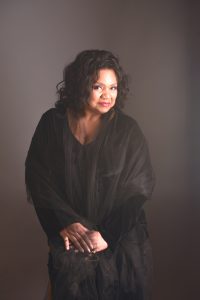Thinking of Doing a Tribute or Themed Show? Then, You Gotta Get an Arc!
Article #7 in this running series.
Let’s say you’ve been in love with Judy Garland and the songs she made famous for years, and you want to do a tribute to her in your next cabaret show.
Or, you think Janis Ian is an underrated songwriter and you want to do a night of all her songs.
Maybe you’d like to create an evening where you can sing songs about the seasons of the year.
Take Note: An evening of songs on one topic, or by the same songwriter, or made famous by the same singer, is not in and of itself enough to take the audience on a ride with you. I have witnessed many themed and tribute shows that still feel random in their construction. And that’s true even if the songs are chronological. This is, in fact, the lesson of many bio-pics and docudramas: Chronology is not, by itself, story. If you’re giving us information about that theme or writer or singer, it is even more important to have a strong dramatic sense or it will be just a lot of facts and details, which can get tedious for an audience.
With themed and tribute shows, I believe every great show has two concurrent arcs, which hopefully work together and illuminate each other:
- The first is the overlying arc—the theme, the chronology, the more obvious story.
- The other is the underlying arc—what you’re trying to get to, the discovery that the character makes in the process of doing the show, or the discovery that the audience finds for itself.
Darius de Haas Finds a Kindred Spirit in Billy Strayhorn

One excellent example of this is Darius de Haas’s Variations on Strayhorn, his show of Billy Strayhorn works. For Darius, the overlying arc was Strayhorn’s oeuvre before, during, and after his time with Ellington, but the underlying arc was finding a place in the New York City music world as an “unapologetic gay black male artist/craftsman” which is where de Haas found his emotional connection—not only to the material, but to Strayhorn himself.
Through this understanding, he was also taking songs that were taught to him by his family—all of whom are professional jazz musicians and moved in that world—and forging his own relationship to them. This gave him ownership over the material, over the story of his family and their influence on him, and over his voice (both singing voice and artist voice).
But all of this came out of the many hours of research that de Haas did on Strayhorn—and that is something else about themed and tribute shows. They often need a great deal of research to discover the history of the artist and the work, the less obvious and deeper connections you have to the artist, your hook into the material, and, then, the story you want to tell with it. As de Haas says of his experience, “I don’t think it would have had the resonance if I hadn’t taken the time to really work on it, and to really get a sense of the oeuvre and when and how it was created.” This included what Strayhorn wrote and how he felt before working with Duke Ellington, through the years with Ellington, and then when he was separating and creating things completely on his own.
De Haas calls this his “soft arc”—similar to my overlying arc. He “sheltered in place” for about six months, researching, and speaking with family and other musical connections who knew and worked with Strayhorn. Before that he knew how important research and history were, but “I think the Strayhorn show really crystallized that for me,” says de Haas. “During that show I had to be more specific. I just concentrated on Strayhorn and let myself get lost in that world. It really upped my game.”
Billie Roe Uses Her Voice as a Singer and a Writer

“What drew me to cabaret was the theatricality. Lyric, to me, is text,” says Billie Roe. Song and theatre together—that’s why she loves the medium. She has had two cabaret careers, back in the ‘70s, and then again more recently, becoming a playwright in between. In cabaret, Roe says, “I could use my voice, as a singer and as a writer.”
All of Roe’s shows have both underlying and overlying arcs. In her show Dangerous Women, the overlying arc was film noir, while the underlying arc explored the Hollywood construct of the good woman (the wife and mother) and the bad woman (the femme fatale) and what those meant to her. In 1978: NYC Underground, Roe used Tom Waits’s songs to tell the story of her awakening to the vicissitudes of the city when she first arrived. In her show Monopoly, Roe had the overlying arc of people who live on the streets of a Monopoly board, but the underlying dramatic question was: “Does where you live define who you are?” which she explored from a number of vantage points, including the view from her day job as a civil servant in the Department of Affordable Housing.
At this point, Roe creates the story first, and then picks the songs that fit the moments in the story. She finds the arc when she can articulate what the dramatic question is in the piece, or, as she says, “What is it that people want to know?” In many of her pieces, just as in a play, there is an inciting incident, a point of attack. In 1978: NYC Underground, she is goaded into exploring the city and daring wild adventures by the prompting and prodding of a supposedly married neighbor at the Ansonia Hotel. The songs chart the experiences that follow, leading to the twist, the payoff at the end. In 1978, at the end, having become a wild adventurer herself, Roe discovers that the neighbor actually lived all alone in her tiny studio, with only a bird for company.
Whether the songs are picked first or the story is created first, any attention you give to what it is you are trying to say makes a difference. For example, in a show of songs about the seasons, you might use the seasons coursing a particularly funny and/or poignant year. Or, you can use them as a metaphor for the seasons of our lives, or perhaps, the course of relationships. This would give you both an overlying and underlying arc. And all this attention to detail will get you to say more than just “after that she did……,” or “and then he wrote…,” or “here’s a song I love that’s about….” All of these are weak links, and don’t take an audience anywhere emotionally.
Frances Ruffelle’s Challenge to Be Different
Frances Ruffelle wants to challenge herself and give the audience something different. She takes that challenge into every aspect of her show, including telling a story through songs that she places in careful order. Ruffelle has a powerful presence onstage

without saying a word, so it’s not surprising that she finds some of her most audience-connected moments take place during silent pauses. All of her shows have been performed both in cabaret spaces and theatres. Her first was a song cycle, with no spoken words at all. Her second was songs from an album she had just released.
Out of a lack of comfort with conventional patter and not wanting to speak to the audience directly as herself, she decided to write poems for the intros which has now become her distinctive style. Inspired by a Jacques Prévert poem, the poems take you where she wants you to be. Says Ruffelle. “They’re like little vignettes that set the scene for the next song.” They draw the audience deeply into the world she is creating, but they also “make you think; I don’t completely tell the whole story.” Still, you are always aware that there is indeed a story. In her most recent show as a resident artist at The Green Room 42, Frances Ruffelle LiveS in New York, she uses the experiences in her life but exaggerates “in every way” to create the show, and so the character is not really her. “I don’t actually mind if the audience wonders if it’s me or not. I think it’s really great for them to come to a show and wonder about it afterwards.” She believes in her show fully as a theatrical experience, and spends a great deal of time in each new performance space to figure out how to use it best, including finding unusual places in the room to sing. At the club venue, she sat on top of an audience banquette for one number, and for her signature song, “On My Own,” knelt and stood on top of the piano. She also has extensive lighting cues, not just because of her unusual use of the space, but also to assist in creating the moods and colors of the show.
Aisha de Haas Uses the Stories of Her Songs to Tell Her Own Story

Aisha de Haas’s overview of her musical journey through life, “The Music That Makes Me Dance,” was shaped by the songs from every stage of her life that spoke to her deeply and that she always wanted to perform. However, what the show ultimately became about was Aisha de Haas finding her voice as a singer of all kinds of songs, not just jazz. (She is the sister of Darius de Haas, and so comes from the same extended family of accomplished jazz musicians.) “The most important thing is the story of the song,” says de Haas. “All of the songs that I picked—I love their story. I felt that these were the stories that I wanted to tell, inside the story of my musical life.” So the overlying arc was these songs that have stayed with her, and the underlying arc is expanding her definition of herself as an artist.
There are many different ways to take the audience on a journey, but just remember that with a themed show or a show in tribute to an artist, it is still as important to create that journey. You can’t just expect the theme or the featured artist to do the work for you!
About the Author
Shellen Lubin is a veteran of both the cabaret and theatre worlds as a director, songwriter, performer, and voice and acting teacher/coach; she has directed the Bistro Awards for the last eight years. She is currently director/dramaturg in development with projects by Lanie Robertson, Stuart Warmflash, Amy Oestreicher, and more. Proud member of SDC and most unions and guilds in the theatre industry; Co-President, League of Professional Theatre Women; Past President, Women in the Arts & Media Coalition; Chair of the National Theatre Conference's Women Playwrights Initiative. She writes a weekly think piece read by thousands called "Monday Morning Quote." www.shellenlubin.com, www.mondaymorningquotes.com, @shlubin





What an extraordinary analysis of the cabaret medium! I am so sorry Carol isn’t around to enjoy it, since she was an absolute master at it, doing her own story songs and essentially creating her own personal arc. And that is, essentially, what it’s all about: when audiences leave, they should feel they just met and made a new friend and gained insight into their own lives. Thank you for writing this, Shellen.
Thank you, Leonard. That means a lot to me. Carol Hall was indeed a master storyteller in her songs (always character, always story, always discovery) and equally in the putting together of To Whom It May Concern, which was a brilliant cabaret/musical that too few people got to experience!